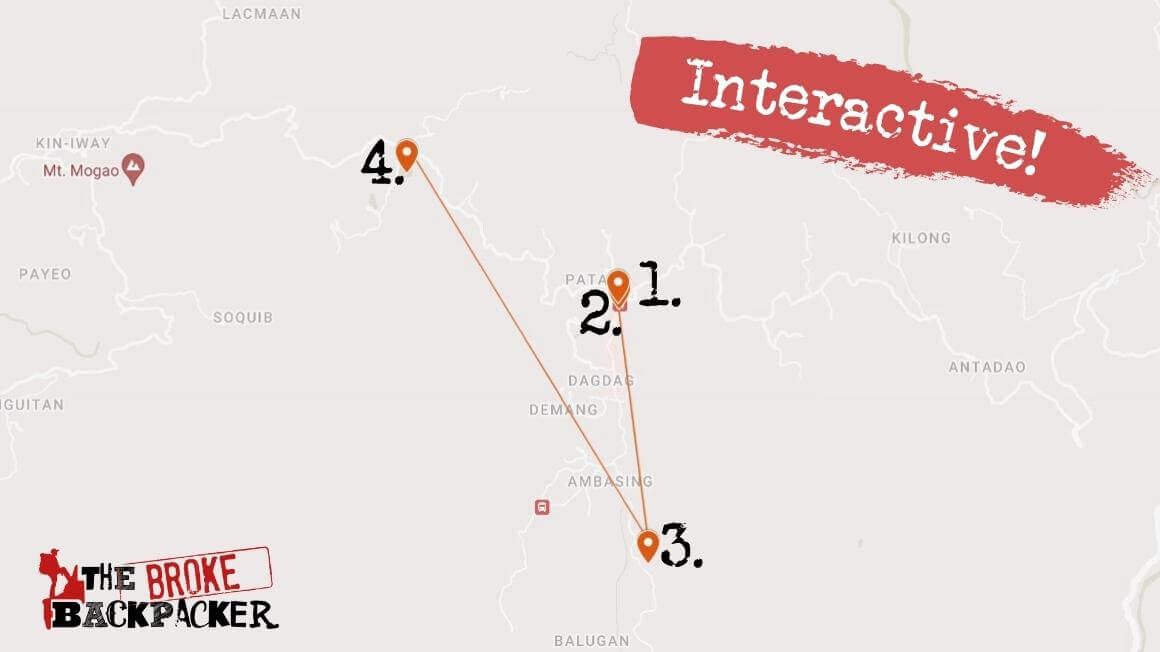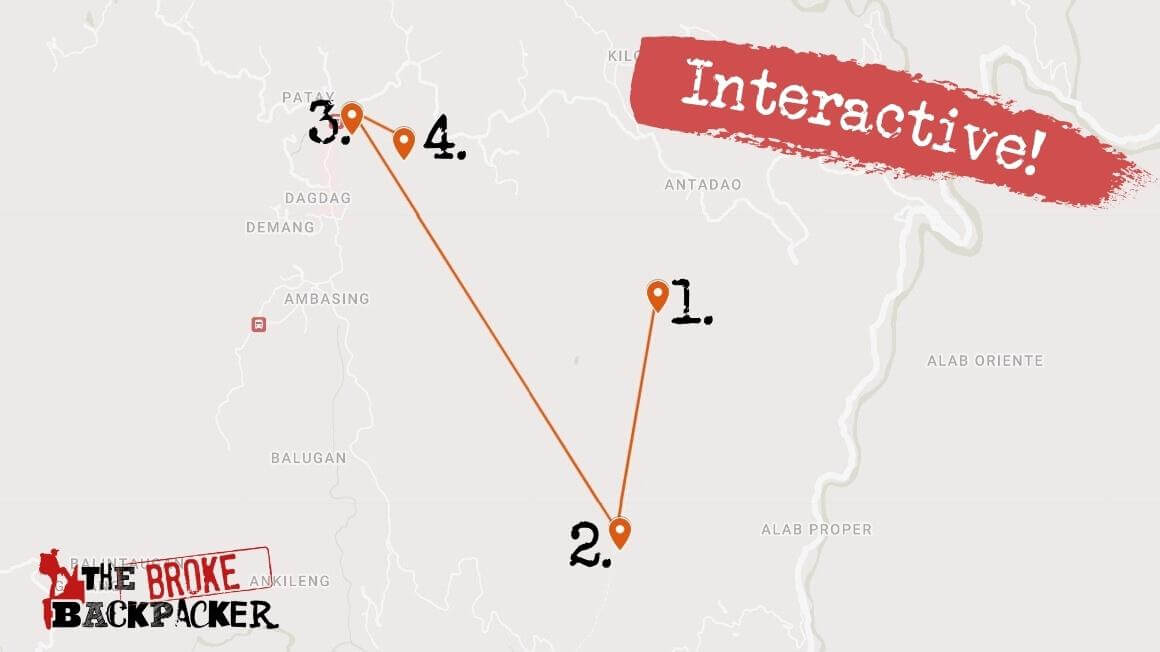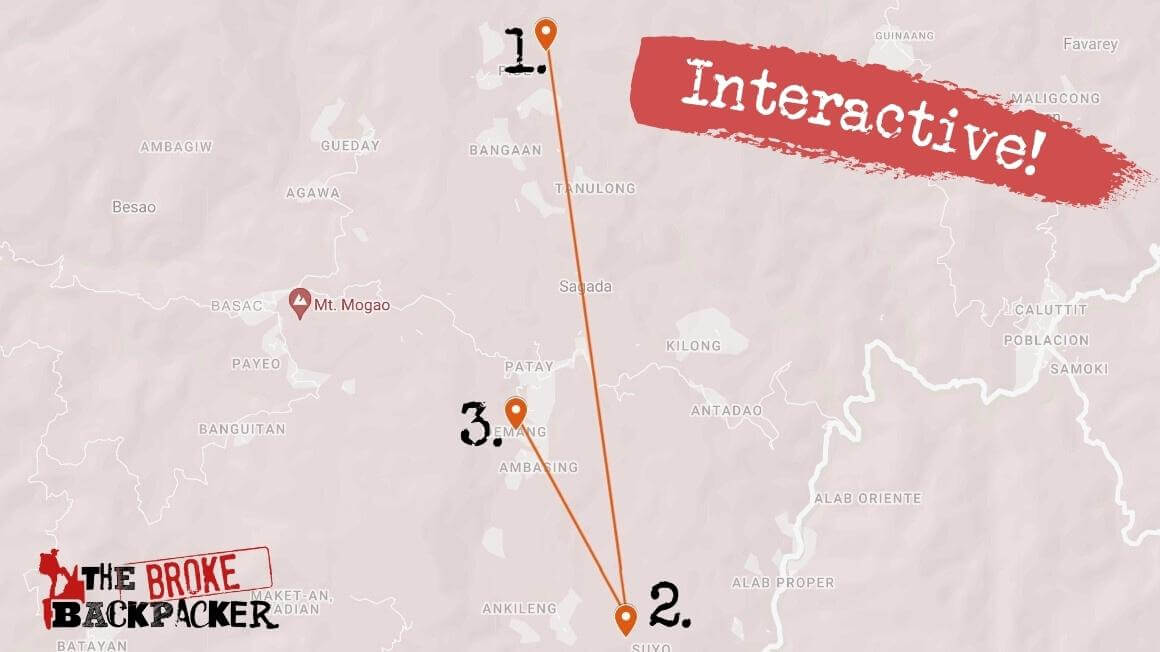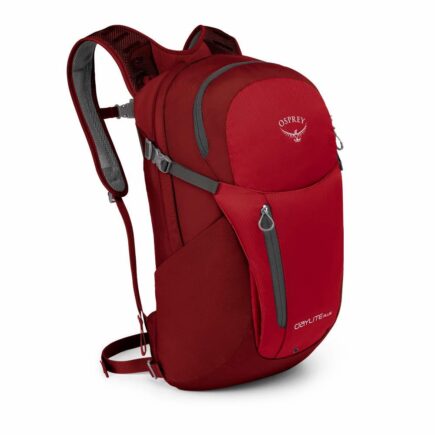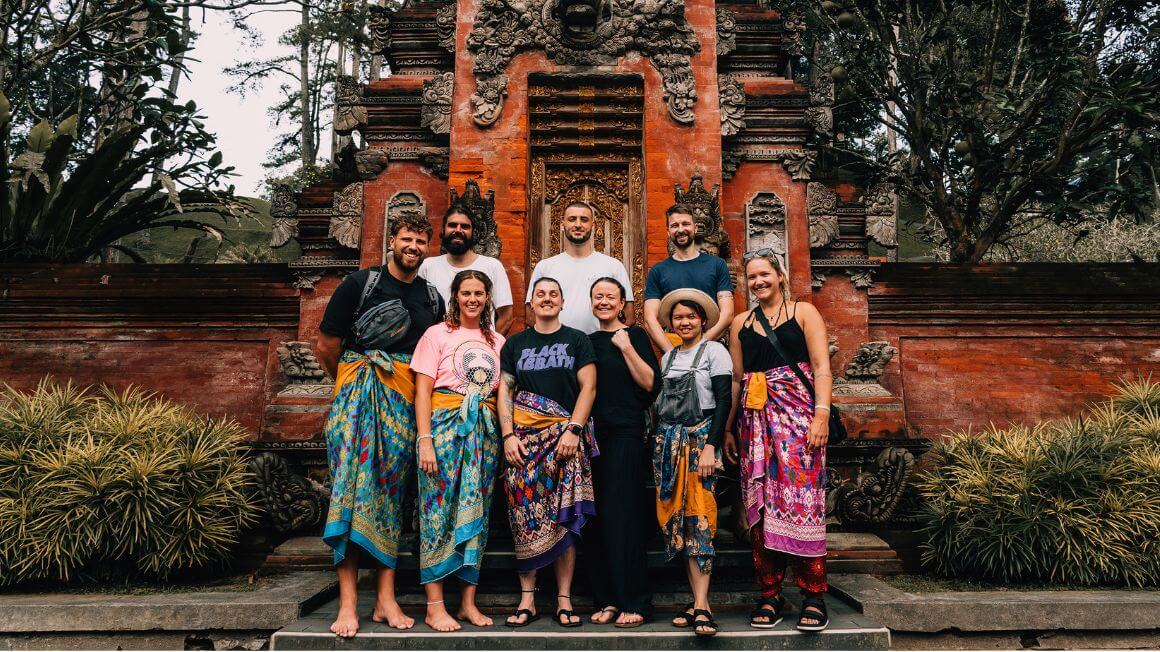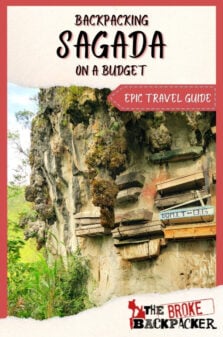Exactly like a mangy stray after a bath, a pedicure and a long visit to the veterinarian, Sagada is currently getting a lot more love than it used to.
And it is DESERVING!
It is a welcome break from the infallible exhaustion of gorgeous sandy beaches, offering clear mountain air, fascinating cave systems, and, of course, the echo valley hanging coffins.
In my top tier Sagada travel guide, I’m going to be exposing all the info you need to ensure an action-packed and mostly problem free visit. I might even tell you how to save a bit of money too…
Let’s get into it!
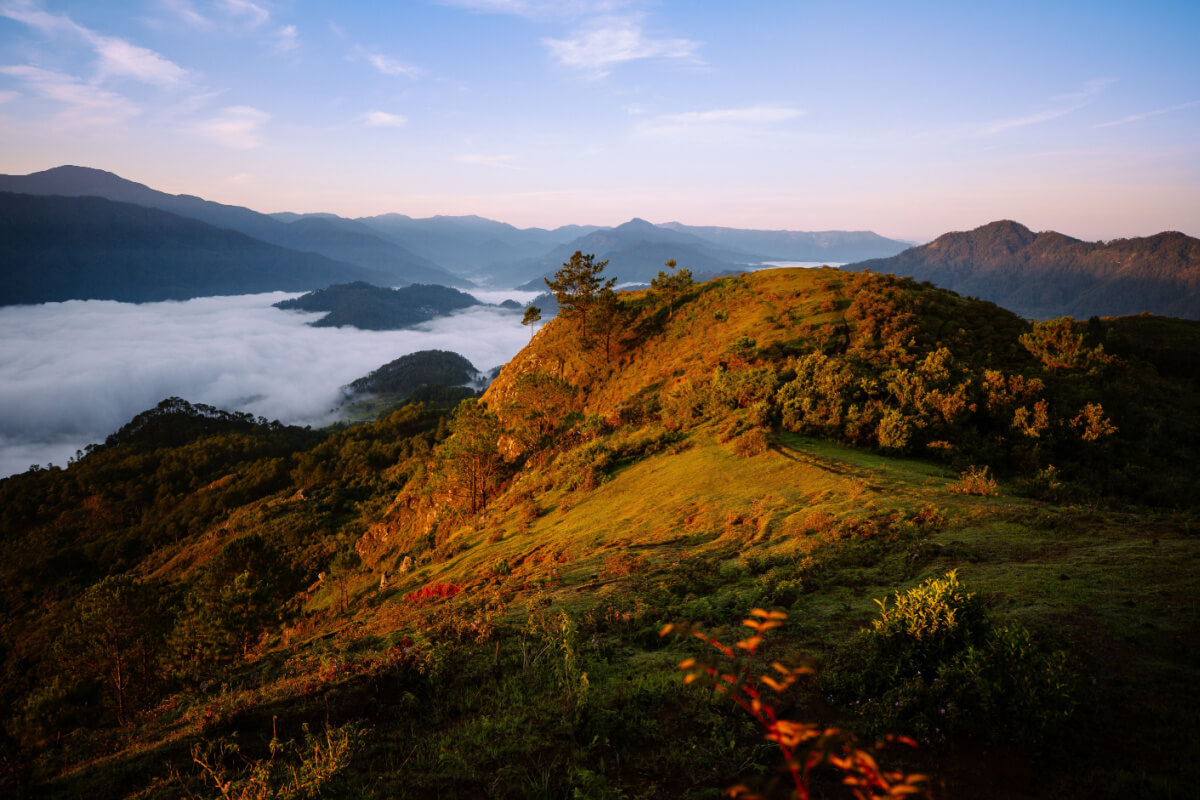
The Broke Backpacker is supported by you. Clicking through our links may earn us a small affiliate commission, and that's what allows us to keep producing free content 🙂 Learn more.
- Why Visit Sagada?
- A Sample 3-Day Itinerary for Sagada
- Top Things to Do in Sagada
- Backpacker Accommodation in Sagada
- Sagada Backpacking Costs
- Sagada Travel Guide Budget Travel Tips
- The Best Time to Visit Sagada
- Staying Safe in Sagada
- Sagada Travel Guide to Getting Around
- Working and Volunteering in Sagada
- Nightlife according to my Sagada Travel Guide
- FAQs About Travelling to Sagada
- Final Thoughts
- Buy Us a Coffee!
Why Visit Sagada?
If my spectacular introduction has not yet convinced you that my Sagada Travel Guide holds some crucial (and juicy) knowledge, you and I are going to have some serious words later (ED: or more likely, you and me).
Anyway, Sagada is an awesome location to add to any Philippines trip! Especially if you are one of those beautiful people who loves varying their experiences and getting off the beaten path. Mountains? Caves? Limestone cliffs decorated by coffins? Legendary…
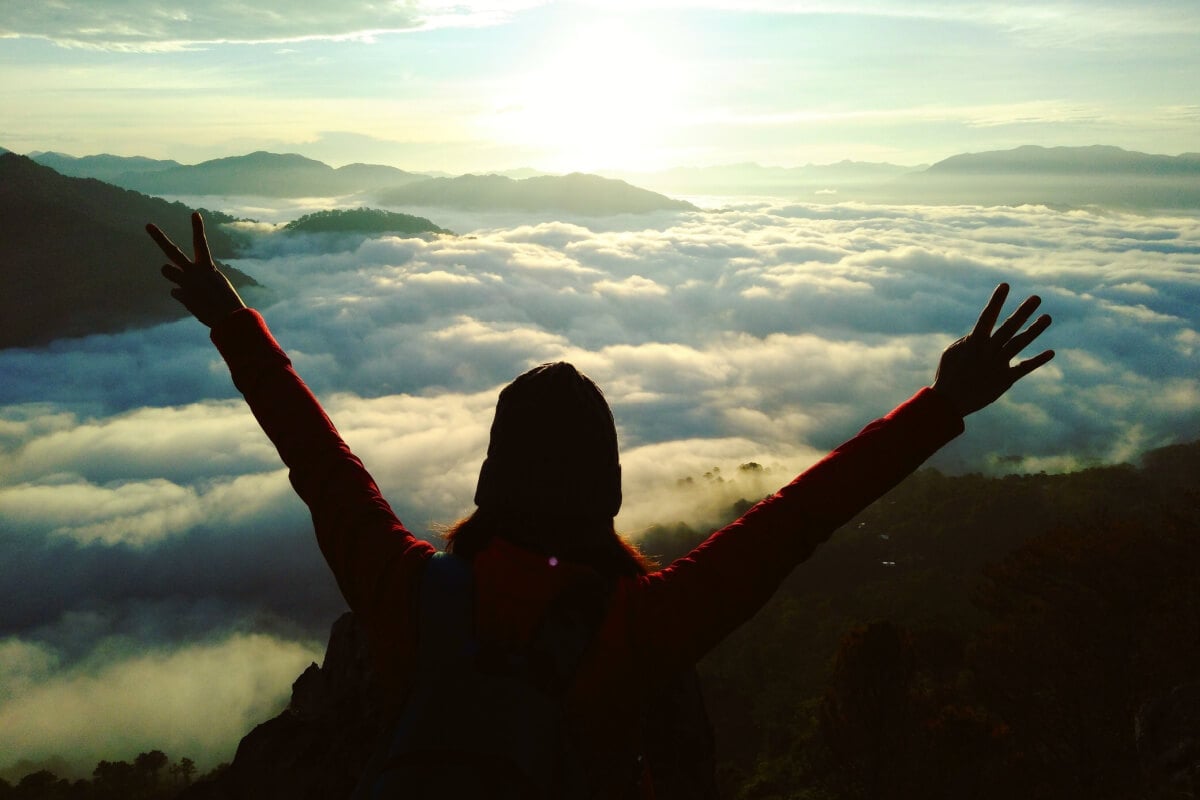
Why else should you visit Sagada (and utilise my epic Sagada travel guide)?
It is seriously cheap. The cost of living in the Philippines is low, and this means that you can send it up a mountain, explore the tastiest places and stay at surprisingly lush accommodations for pennies on the dollar.
The people (as with most places in the Philippines), are super friendly and generous, making Sagada a fantastic place for better exploring local culture. Beaches are cool, but they can sap the exoticism from a place, in the form of multiple little stars…
A Sample 3-Day Itinerary for Sagada
So what does a trip here look like? For starters, you have to remember to register online and book a single night’s accommodation at a trusted location. You need this to get through the border!
There are increasing amounts of red tape to account for the number of tourists. It’s worth double-checking what is and isn’t allowed. However, I do know that you must stay for at least one night! So why not try 3…?
Day 1: The Tourist Office, Sumaguing Cave, Lake Danum
There’s no way anyone is taking part in a sunset hike on day 1. But that doesn’t mean that things won’t get done! Head to the Sagada Tourism office to book your tours (and the mountain sunrise on day 2). Yes, you may part with a significant cash sum, but there is an ATM in the town, and this will be one of your biggest expenses.
The Ganduyan Museum is worth an hour, and grab a delicious breakfast at any of the local cafes nearby.
Next, we’re going to get stuck into the Sumaguing Cave, one of the most popular tourist attractions in the area. It is a caving experience, so get ready to climb through some tight spaces and see weird cave stuff. The whole activity takes 2 hours, with transport either way.
You’re likely to be pretty tired after caving, so we’ll head to Lake Danum for gorgeous sunset views, and maybe a picnic if you’re pragmatic enough. You’ve got an early start tomorrow, so don’t overdo it at the local bar…
Day 2: Mountain Sunrise, Blue Soil Hill and Hanging Coffins
4:30 am start to catch some stunning views. Head to the Marlboro Hills (incl. Kamanbaneng) to stick your head above the clouds and experience the magic of the morning. There are various vendors in the area, so you can grab a snack and a drink if for some reason you are awake enough to eat.
Next, we’re going to embark on a hike to Blue Soil Hill. It takes around 2 hours to trek there but is predominantly downhill, and there is a range of other awesome viewpoints to take advantage of. The blue soil is pretty amazing too.
When you get back, grab a super tasty/amazing brunch and chill out in the city centre. You could take the time to hike to the cemetery at Calvary Hill if you want something free and local to do. That is a top Sagada travel guide recommendation right there.
Next up are the Hanging Coffins. The whole tour takes about an hour, but it is super interesting. Head for dinner at Log Cabin for a super tasty dinner. You can have a beer or five tonight.
Day 3: Bomod-ok Falls, Balangagan Cave
Heading to the Bomod-ok Falls is a top thing to do in Sagada. The largest of the three local waterfalls, touring here involves a mountain trek, followed by some sensational photo opportunities and the chance to swim in the pool at the base. There might even be a little surprise for you when you get there.
Head back to town for lunch, as you will be starving!
For your second caving experience of the trip, jump into Balangagan Cave. It is less visited than Sumaguing and is a little less user-friendly. If you back your caving skills, then challenging yourself here can be fun and rewarding. It has the prettiest cave formations in Sagada.
If that’s not enough for you, head to Demang to experience another side of the local culture. Sometimes, wild celebrations and activities are conducted, so count yourself lucky if you manage to see them!
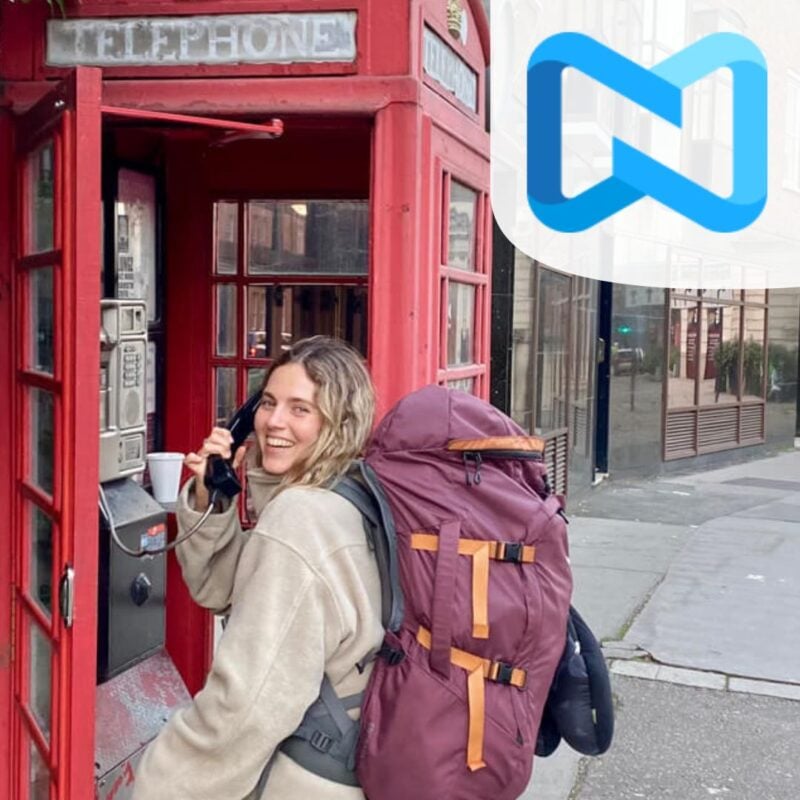
Call your mum, call your job to say you’re quitting or your now ex-boyfriend to say you’re marrying some Sri Lankan dude.
That’s up to you! But get an eSIM — it’s the best way to stay connected when travelling. And Nomad is the best way to find your ideal package 🙂
Get an eSIM with NomadTop Things to Do in Sagada
Being one of the most beautiful areas of the Philippines, there is a boatload of cool stuff to do in Sagada. My Sagada travel guide has got all the best ones, including intricate cultural oddities, paradisical nature, and some saucy bonuses!
1. Marvel at the Unique Hanging Coffins
One of the main reasons a lot of people make the trek up to Sagada is to see the iconic hanging coffins. The Igorot people of Sagada have traditionally ‘buried’ their dead in colourfully painted coffins clinging to the sides of limestone cliffs, or piled up at the entrance of caves.
They believe these methods of burial provide an easier path for the spirits to reach the great beyond, as well as keep wild animals from their remains. These days it is more common for locals to bury their dead in cemeteries – although there are still a few locals who choose to be buried in the traditional way.
You can reach some of the coffins independently or a visit can be included in an Echo Valley tour booked through the Tourist Information Centre. This is a must-see on any Sagada itinerary.
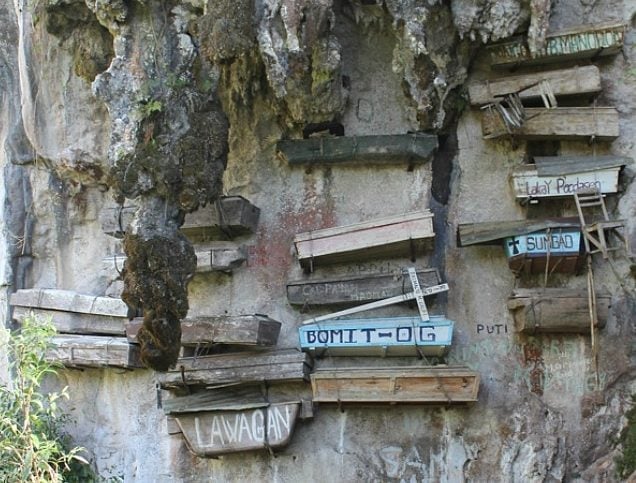
2. Go Spelunking in Massive Cave Systems
If adventure is your middle name, and you’re backpacking the Philippines, then spelunking may very well be the perfect activity for you. The most popular spelunking adventure is the Cave Connection tour, which takes you from Lumiang Cave through to Sumaguing Cave.
Exploring the underground cave system involves wading through chilly rivers, rappelling down waterfalls, and squeezing yourself through tiny openings.
It is like being birthed again, except this time you are old enough to be aware of it. Definitely not for the claustrophobic! There are also stacks of wooden coffins located at the mouth of Lumiang Cave, which is always an interesting sight.
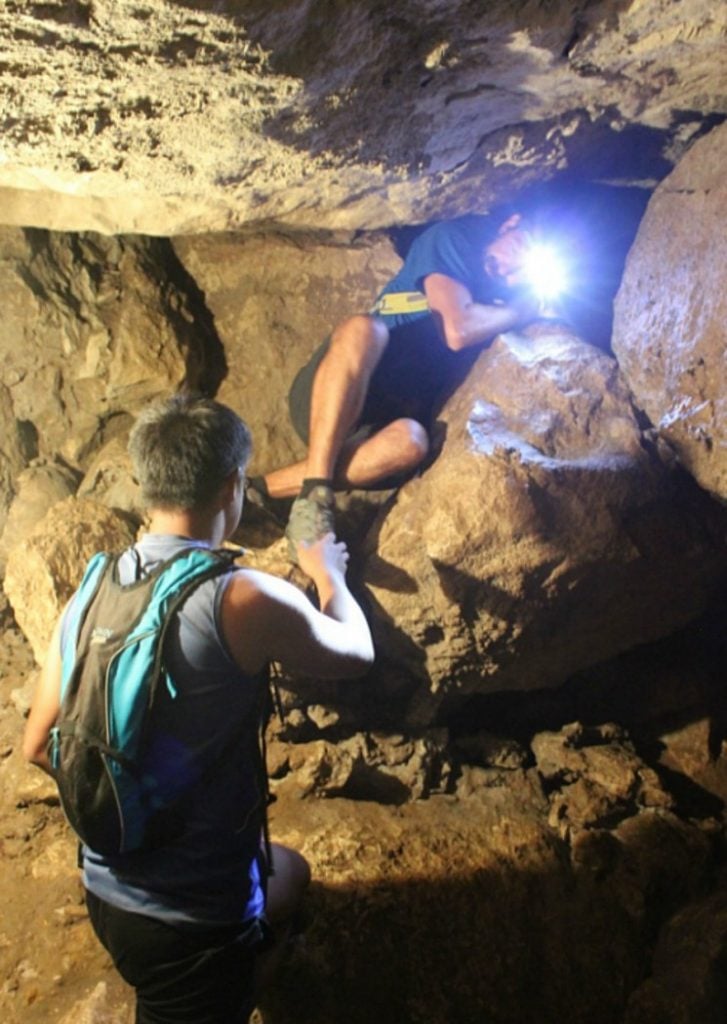
Tour Guides are required for this 3-4 hour adrenaline rush of an activity, and you can pick them up from the Tourist Information Centre. If this sounds too extreme, you can do a shorter caving course in Sumaguing Cave. There is also an option to explore Balangagan Cave which is a 4-hour adventure and has some of the most beautiful rock formations of all the caves.
3. Hike in the Lush Mountainous Surroundings
There are many hikes on offer in the mountains around Sagada, some that can be done independently and a larger number that require a guide (all very affordable) Echo Valley is one of the most popular hikes in a Sagada itinerary, and on half-day hiking, you will see rice terraces, an underground river, hanging coffins, and a waterfall, along with lots of gorgeous scenery.
If you feel like a challenge, you could climb the highest peak in Sagada – Mt Ampacao – or hike to one of the waterfalls mentioned below. There are a large number of hikes available with local guides from the Tourist Information Centre, where you can pick up a free map and guide with the hikes listed.
4. Swim under a waterfall
It can get pretty hot during the day up in the mountains and what better way to cool off than in a deep, cool pool under a cascading waterfall? I can’t think of any!
There are numerous waterfalls around Sagada that can be visited independently or as part of a tour. Visit Bokong Falls for its deep, perfectly shaped rock pool close to town, Bomod-Ok Falls for its impressively high falls surrounded by rice terraces, and Pongas Falls for an adventure, with a challenging trek of slippery trails, and a sheer drop-off to reach it.
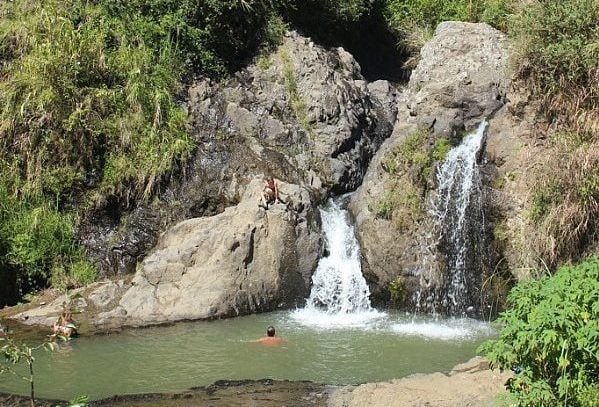
5. Try all the excellent eateries
The Philippines is not known for its cuisine but it doesn’t mean there aren’t delicious food destinations – Sagada is definitely one of them. For such a small town there is a ridiculously high number of eateries, and the crazy thing is – almost all of them serve incredible food.
Sagada is known for its lemon pie, but there are so many other delectable dishes that are done so well here – wood-fired pizza, Korean dishes, fried chicken that Colonel Sanders would be proud of, traditional Pinoy dishes such as chicken adobo, handmade Italian pasta dripping with cheese, and so much more.
You won’t go hungry in Sagada, in fact, you may come away with a few joyfully earned extra pounds. Check out the restaurant list further down this guide to start planning your meals now and make sure to include at least some of them when planning your Sagada itinerary.
6. Try the local coffee
As with its cuisine, the Philippines is also not generally known for having great coffee, but Sagada is definitely an exception. Due to the higher altitude and cooler mountain temperatures, coffee grows exceptionally well in this mountainous corner of the Philippines and a lot of the local cafes not only serve the premium local stuff, some even roast the beans themselves onsite. They also grow tea in the area so try to pull yourself away from the glorious coffee to try the mountain tea as well. They also grow tea in the area so try to pull yourself away from the glorious coffee to try the mountain tea as well.
If you have ever wanted to try the infamous civet coffee, a.k.a. Kopi Luwak, the most expensive coffee in the world – then you can find it here. However, the method of harvesting this coffee bean requires the systematic abuse of the endangered civet. Civets are kept in cage farms where they are fed and harvested for the half-digested coffee beans they excrete (yep – that’s the source of Kopi Luwak).
Think hard before you spend your dollaridoos: The Broke Backpacker doesn’t engage with animal tourism, and neither should you. (The other coffee is fine though.) 🙂
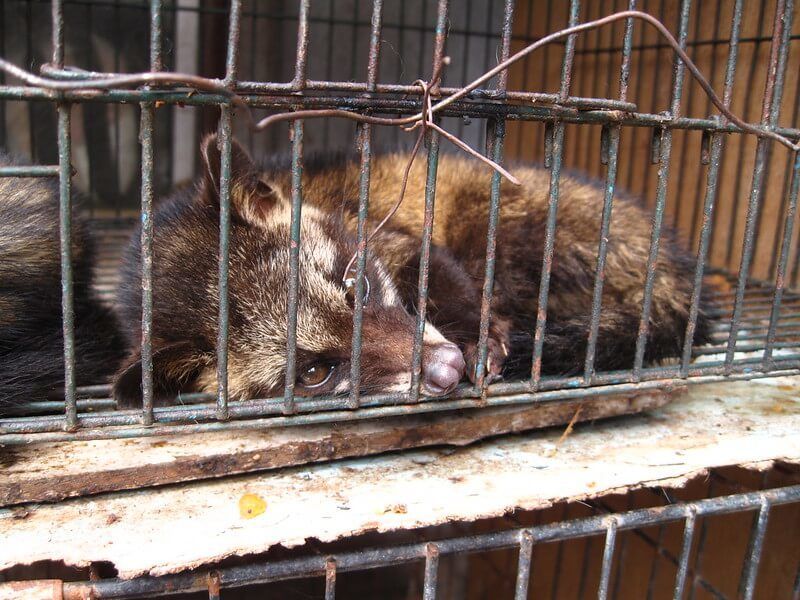
Photo: surtr (Flickr)
7. Go for a leisurely stroll around town
The surrounding mountains of Sagada offer gorgeous spots for hiking and adventure, but the town itself is beautiful and also definitely worth exploring. There are pine-covered mountains surrounding you everywhere you look, and once you head in any direction from the main street of town, you will very quickly come across the lush and verdant countryside with mountain views, rice terraces, and a whole lot of peace and quiet.
There are a few destinations that are worth visiting on the outskirts including the Sagada Weaving Cooperative where you can buy quality woven items and clothing while also seeing the talented weavers at work, Gaia Cafe – a crazy-looking hippie treehouse/vegetarian restaurant, and Misty Lodge – a painfully quaint wooden lodge with a restaurant serving the most amazing pizza. Make sure to add these to your Sagada itinerary.
8. Try your hand at rock climbing
If you have ever wanted to give rock climbing a try but have been put off by high prices, then now is your chance. Rock climbing in Sagada is relatively cheap and with a low difficulty level, it is the perfect place for beginners.
You can either just show up, it is located behind the cemetery in town and the attendant is usually there, or ask for more information at the Tourist Information Centre. All the gear is provided.
Wondering where you should stay in Sagada? Sagada is the perfect destination for backpackers and home to some of the best accommodations in the Philippines!
There are plenty of budget options in and surrounding the town, but it’s almost impossible to book anything in advance, so you need to just rock up and see. If that isn’t your style, you can book a hotel…
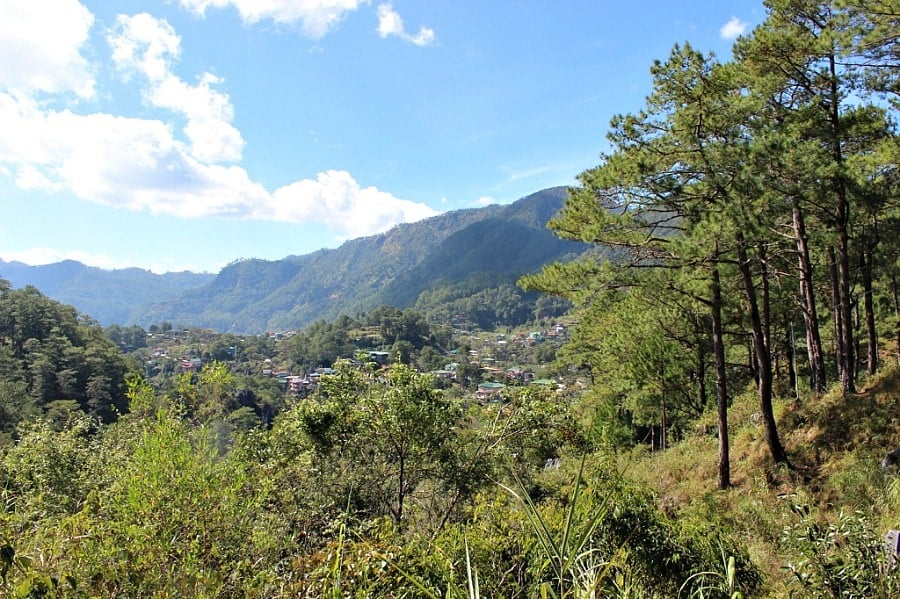
You have to book at least one night online, but after that, feel free to search for much better and cheaper accommodation options. The Sagada tourism office wants you to spend money, but they also understand that backpackers are travelling on a shoestring.
Accommodation is usually more expensive during the peak tourist season. Try heading over between October and April when the tourists are away!
Remember that Sagada is still a little out of the way. You’re not going to find too many places that can offer the whole package. It is a perfect backpacker destination, however!
Best Places to Stay in Sagada
These are the top places to stay in Sagada, according to my EPIC Sagada travel guide:
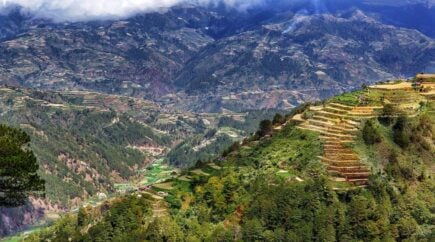
Kilong
If you want to be a little more off the beaten track, then look for somewhere to stay in Kilong. You’ll find mostly private Sagada accommodation options in this area as well as a wealth of natural features.
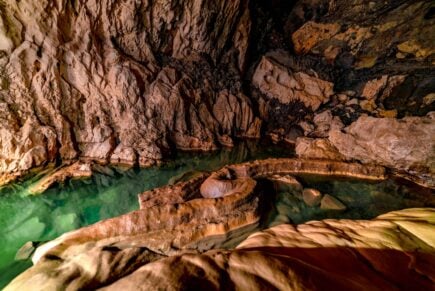
Ambasing
Ambasing is located south of the center of Sagada and close to the Lumiang and Sumaguing Caves. This makes it a great choice when you’re deciding where to stay in Sagada on a budget.
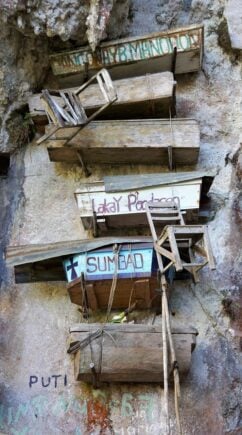
Patay
Patay is one of the largest neighborhoods in Sagada and is pretty much the center of the town. This is where you’ll find the tourist center where you can get information on the best activities and sites.
Sagada Backpacking Costs
We should all have been gallivanting through the Philippines for long enough to know that 100PHP = $1.80. Or (a more useful approximation) $1 = 50PHP. Using this will keep your budget in line!
You generally don’t have to worry too much about costs, unless you are taking some seriously expensive tours, or staying at plush hotels. Most tours are worth it though!
Tour prices are generally set without regard to the group size. If you can get together with the right number of people, the prices are much lower individually. Sadly, every tour has a different bloke in charge, so having a flexible group will drop prices.
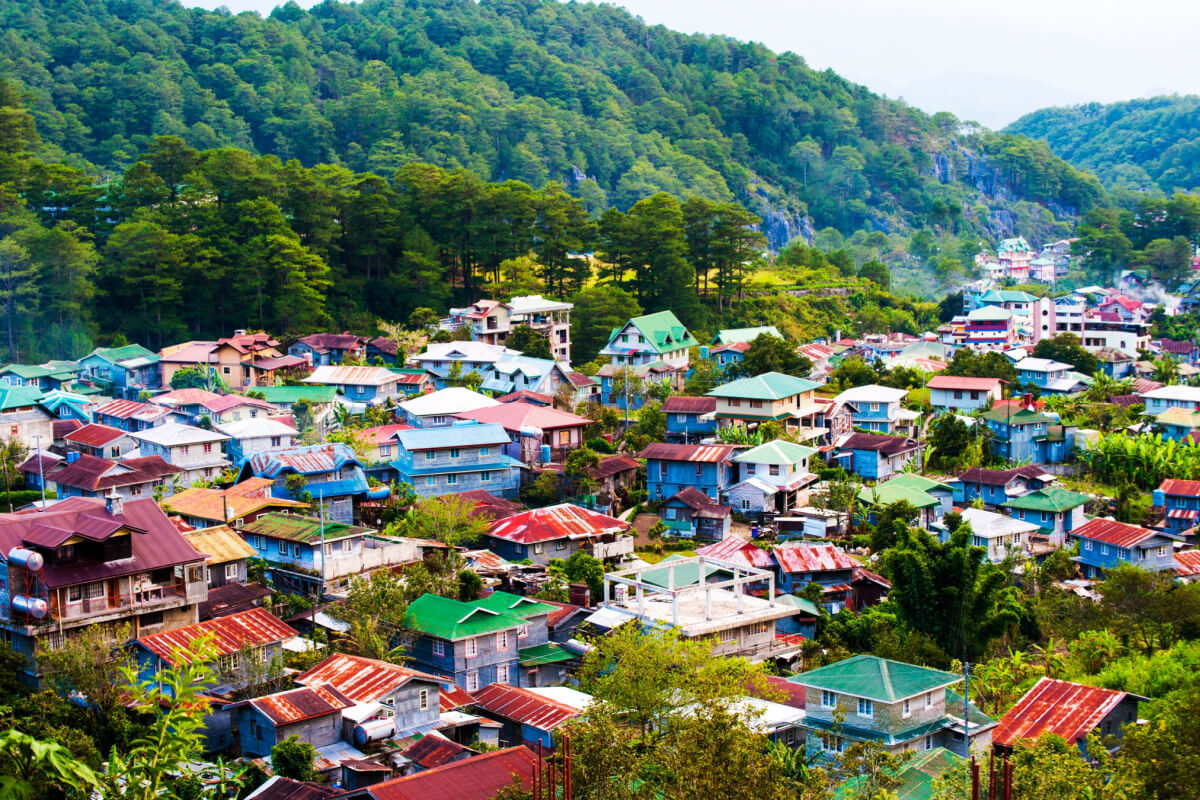
When you explore further afield, you are required to have a guide. Don’t be a dick and slip off alone, THEY WILL CATCH YOU. A workable daily budget is probably $10-$30.
The town itself is walkable, and eating street food is a great way to slash costs. Water is weirdly expensive here too, so buy a big 10L thingy and refill your water bottle from there.
As always, the most expensive parts of your day should be tours and accommodation. You want to get out there, and you need a place to sleep! Public transport to Sagada is about $15 each way by bus.
A Daily Budget in Sagada
Need some more info? Here’s a breakdown of a stereotypical daily budget in Sagada…
| Expense | Broke Backpacker | Frugal Traveler | Creature of Comfort |
|---|---|---|---|
| Accommodation | $0-$5 | $10-$30 | $40+ |
| Transport | $0-$5 | $5-$10 | $10+ |
| Food | $2-$8 | $5-$15 | $15+ |
| Nightlife | $0-$7 | $5-$15 | $10+ |
| Activities | $5-$10 | $10-$20 | $15+ |
| Total | $7-$35 | $35-$90 | $90+ |
Sagada Travel Guide Budget Travel Tips
Below I have listed a few key travel tips for visiting Sagada!
- Register with the Tourist Information Centre when you arrive and pay the environmental fee, you will need the receipt to book any tours and to do any hiking in the area.
- You don’t generally need to book accommodation in advance (unless it’s a holiday period), just turn up and ask around until you find a place where the price is right. It is perfectly acceptable to haggle (if you know how).
- The Internet is pretty spotty in Sagada and most cafes either don’t offer it or it is so bad that it’s not worth using. Try getting a guesthouse with internet or pay to use the internet at the internet cafe on the top floor of the shopping centre, next to the Tourist Information Centre.
- There is an ATM in the Tourist Information Centre
- If you want to travel during holidays such as over Christmas, New Year’s or Easter – make sure to book your buses in advance as they fill up quickly.
- Most importantly: be respectful of the local people and their culture.
Top Tips for Broke Backpackers
To keep your spending to an absolute minimum and travel cheaply whilst backpacking in Sagada I recommend sticking to the three basic rules of budget backpacking…
- Camp: With plenty of gorgeous natural places surrounding Sagada, why not carry a tent and camp to cut down on costs? If not camping then why not a local experience? Make sure to check out Airbnb or Couchsurfing for a local taste of Sagada.
- Cook your own food: To save money on food, carry a pocket rocket stove on your backpacking trip so you can cook meals on the fly. Another option is to make simple salads and sandwiches – no cooking required. It will save you a ton of money.
- Hitchhike: Thumb a ride! People in the Philippines are kind and generous so there’s no harm in giving hitching a shot. Getting around by hitchhiking is a great way to keep your transport costs in Sagada down.
- Pack a travel water bottle: Ditch plastic – save money AND the planet every day!
Why You Should Travel to Sagada with a Water Bottle
Plastic washes up on even the most pristine beaches… so do your part and keep the Big Blue beautiful
You aren’t going to save the world overnight, but you might as well be part of the solution and not the problem. When you travel to some of the world’s most remote places, you come to realise the full extent of the plastic problem. And I hope you become more inspired to continue being a responsible traveller.
Plus, now you won’t be buying overpriced bottles of water from the supermarkets either! Travel with a filtered water bottle instead and never waste a cent nor a turtle’s life again.
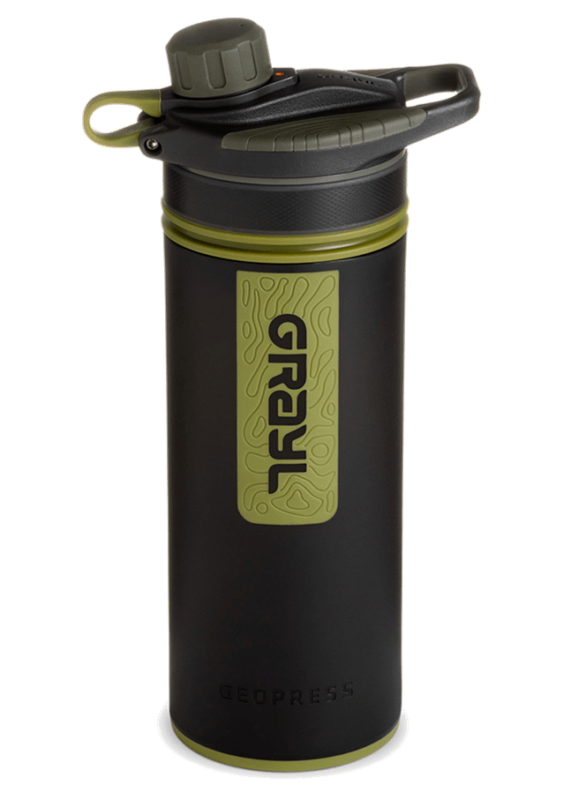
Drink water from ANYWHERE. The Grayl Geopress is the worlds leading filtered water bottle protecting you from all manner of waterborne nasties.
Single-use plastic bottles are a MASSIVE threat to marine life. Be a part of the solution and travel with a filter water bottle. Save money and the environment!
We’ve tested the Geopress rigorously from the icy heights of Pakistan to the tropical jungles of Bali, and can confirm: it’s the best water bottle you’ll ever buy!
View on REI Read the ReviewThe Best Time to Visit Sagada
The best time to visit Sagada is generally considered to be between November and February. A lot of tourists go at this time, especially in January and December, which can make it more expensive than usual. Sagada is generally humid and hot and has two seasons; the dry season and the wet season.
The dry season runs from December until May, which means that you are less likely to be obliterated by a torrential downpour. Visiting June to November in the wet season will earn you some pretty epic rainstorms.
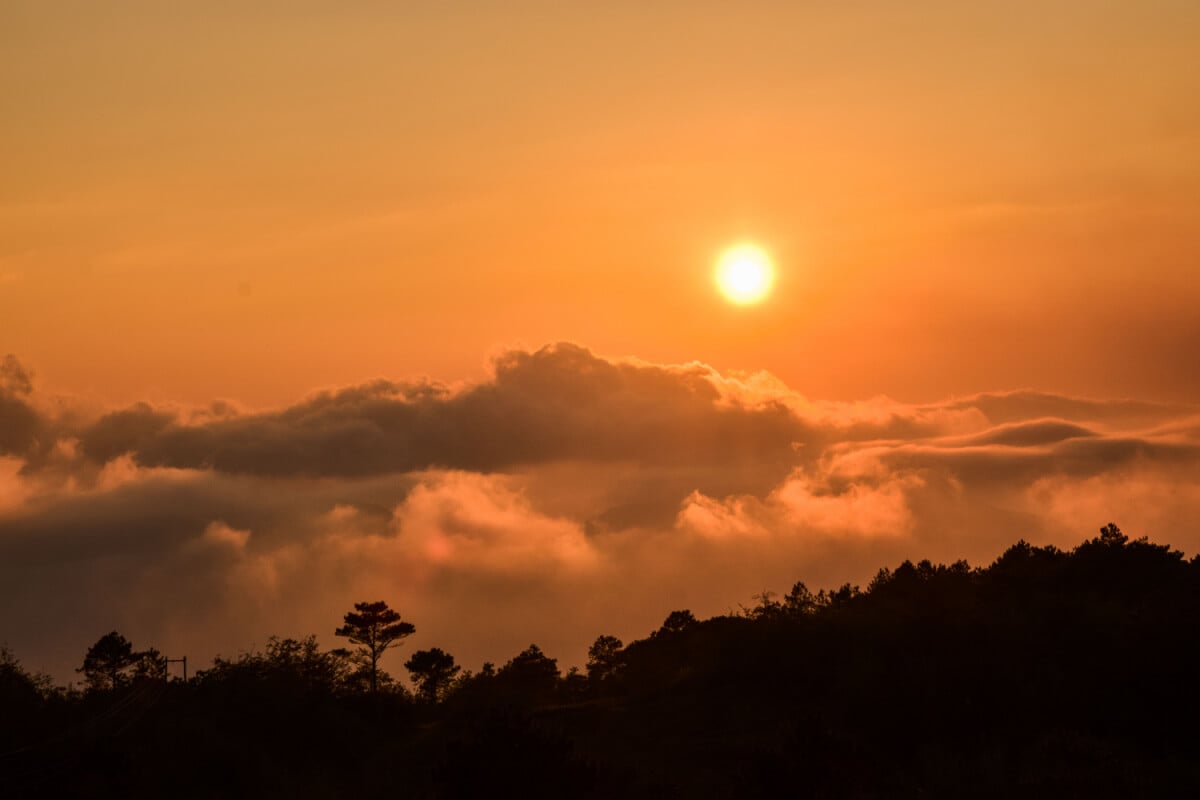
Average temperatures hover between 25-30 degrees Celsius and are pretty consistent within this range. Because of the humidity, it can feel hotter. However, when you head up the mountains for a glorious sunset, it can get pretty chilled. Take a coat?
What to Pack for Sagada
Here are a few essentials I wouldn’t miss when heading out on the trail. Add ’em to yo packing list man!!
Osprey Daylite Plus
Any city slicker needs a SLICK daypack. In general, you can never go wrong with an Osprey pack, but with its array of awesome organisation, durable materials, and a comfy build, the Daylite Plus will make your urban jaunts buttery smooth.
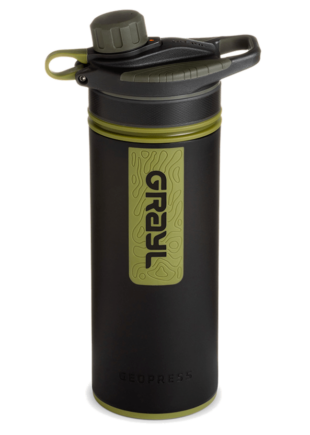
Grayl Geopress Filtered Bottle
Save $$$, save the planet, and save yourself the headache (or tummy ache). Instead of sticking to bottled plastic, buy a Grayl Geopress, drink water no matter the source, and be happy knowing the turtles and fishies thank you (and so do we!). 🙂
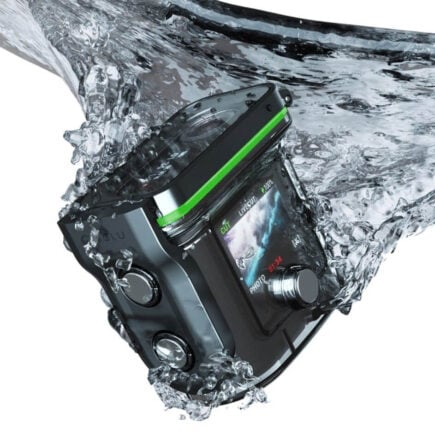
OCLU Action Camera
Wait, it’s cheaper than a GoPro and… better than a GoPro? The OCLU action cam is the cam for budget backpackers that want to immortalise all their wildest adventures – including that time you dropped it off a Himalayan mountain – WITHOUT breaking the bank.
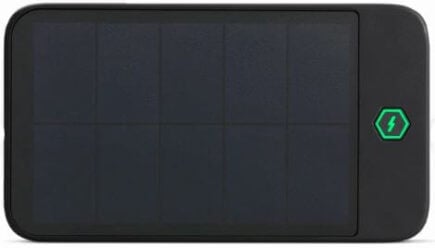
Solgaard Solarbank
Resourceful travellers know how to find power outlets anywhere on the road; smart travellers just pack a solar power bank instead. With 4-5 phone cycles per charge and the ability to top up literally anywhere the sun is shining, there’s no reason to ever get lost again!

Petzl Actik Core Headlamp
ALL travellers need a headtorch – no exceptions! Even in the hostel dorm, this beauty can save you in a real pinch. If you haven’t got in on the headtorch game, DO. I promise you: you’ll never look back. Or at least if you do, you’ll be able to see what you’re looking at.
Staying Safe in Sagada
Sagada is generally super safe. Operating as a relatively isolated mountain town, everyone knows everyone and tourists are generally treated very well (for obvious reasons).
Crime is extremely rare, but you should stay on top of your possessions and not do silly stuff. Take normal precautions and you should have no trouble.
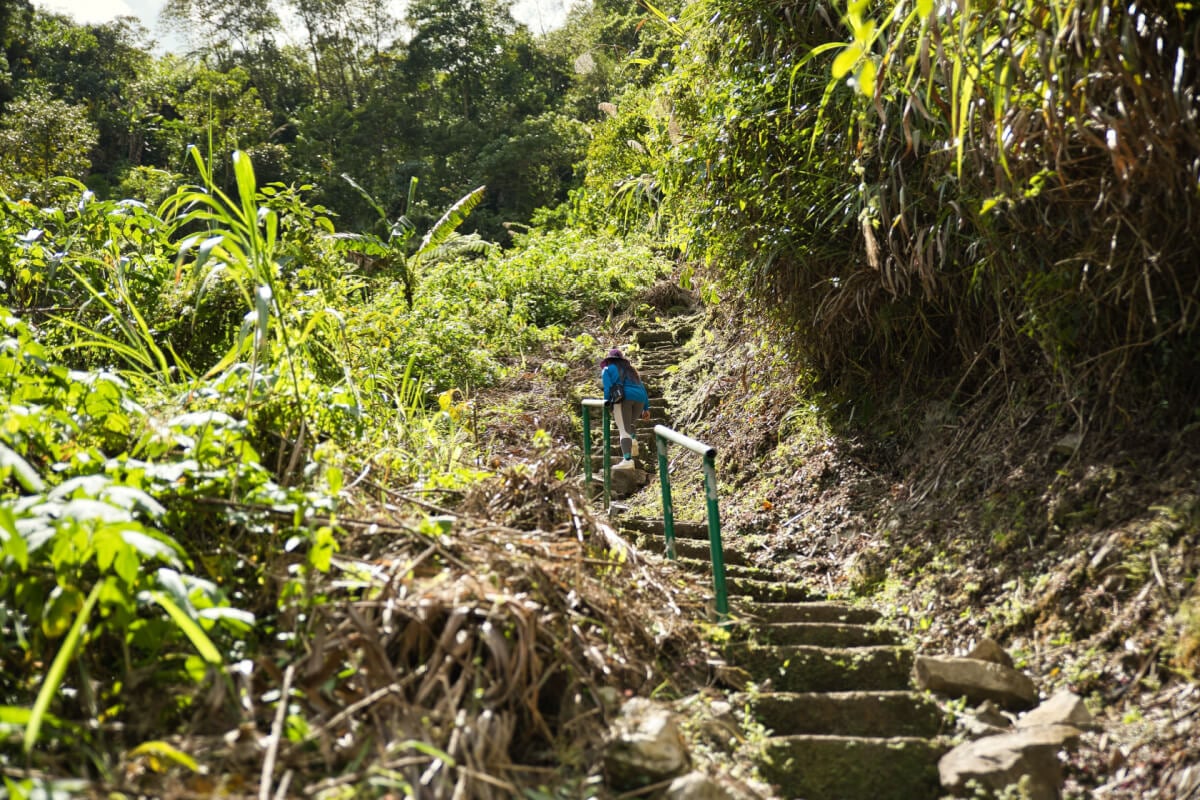
Sustaining injury from adventuring is a much more likely occurrence. There are a host of active occupations to take part in, and accidents do happen. However, the chances of this happening are still low.
Especially since you are accompanied on active tours by an experienced guide (e.g. caving, climbing, rafting, hiking), the extent of problems that may arise is relatively narrow. However, healthcare is not superb, so try not to puncture a lung 🙂
Sex, Drugs, and Rock ‘n’ Roll in Sagada
Like the rest of the Philippines, alcohol is as free-flowing as a mountain stream. You can pick up local brews, cheap shots, and even head to some pretty western bars.
However. Local rules and customs mean that most bars shut around 10 pm, which means there is no crazy wild nightlife. Your best bet is to make some friends and try and work out if anything is going down under the radar. Or have some beers around a fire and leave it at that.
This is definitely not the place for super wild partying!
Sagada Travel Guide to Getting Around
There are two ways to reach Sagada from Manila: via the mountain city of Baguio, or via the smaller town of Banaue, which is a popular destination in itself (for its rice terraces).
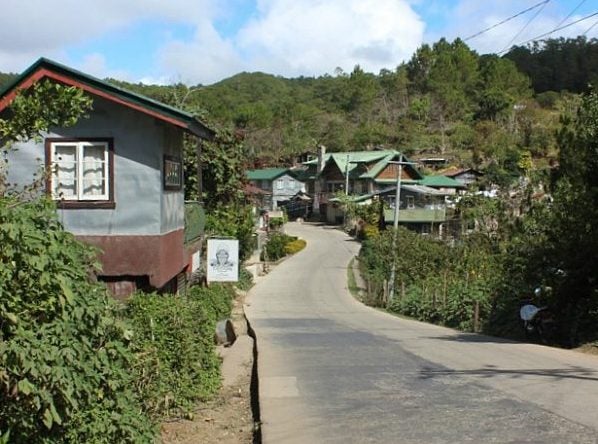
There are several bus companies that run regular buses, usually hourly, between Manila and Baguio. You can also catch buses overnight. Victory Liner is one of the main companies and they run buses from Cubao, Pasay and Monumental Main Terminal in Caloocan City. The trip takes between 4-6 hours and you can choose a basic or deluxe bus service.
On arrival in Baguio, you will need to get from the main bus station to Dangwa Station, a short taxi ride away, to catch the GL Trans bus to Sagada. You can also choose to stay in Baguio if you’d prefer to explore the town before heading to Sagada.
Buses leave on the hour from 6 am to 1 pm and take about 5-6 hours to reach Sagada. These buses are basic, with tiny seats and no air-conditioning. A word of warning: prepare for a hot and bumpy ride!
For buses to Sagada from Manila via Banaue, you can take Autobus and Dangwa Tranco which both leave their respective terminals in Sampaloc at 10 pm for the nine-hour journey.
On arrival in Banaue, there are jeepneys, and sometimes minibusses or vans that can take you the last 3-4 hours to Sagada. Just ask at the Information Centre although it is likely you will have drivers waiting where the bus drops you off. Alternatively, take the 9 am jeepney to Bontoc and transfer there to the bus to Sagada.
Both ways take about the same amount of time and also cost approximately the same amount. You could break up the long journey with time in either Baguio or Banaue if you don’t want to bang it all out in one go.
Working and Volunteering in Sagada
The working and volunteering scene in Sagada is almost nonexistent unless you are somehow able to magic a project from your back pocket.
In general, for the Philippines, all foreign nationals are required to fill out a work visa if they intend to earn in the country. If you want to volunteer though, you won’t need a visa unless you plan on sticking around longer than six months! How cool is that!
In general, I am a massive fan of Worldpackers, which connects you to volunteering and work opportunities all over the globe. If you’re looking to travel for a while, this is one of the best ways of extending your stay, and contributing to local communities too!
Worldpackers opens the doors for the top work opportunities in hostels, homestays, NGOs, and eco-projects around the world.

Worldpackers: connecting travellers with meaningful travel experiences.
Nightlife according to my Sagada Travel Guide
As previously said, there is little to no nightlife, considering bars close at 10 pm. There is occasional live music though, and you can have a few beers in the daytime with no trouble. Don’t expect a big party scene, but you might be able to link up with some other travellers for a few beers.
Food in Sagada
As mentioned above, the options are almost endless for amazing food in Sagada. Sagada’s street food is delicious, but don’t take my word for it. Check out this awesome video guide to the best street food in Sagada.
Here are a few tried and tested favourites:
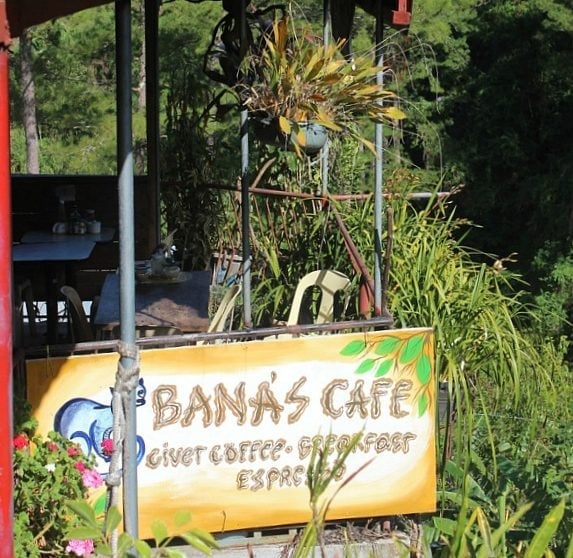
- Bana’s Cafe – One of my favourite spots, hanging over a leafy gorge. Bana’s serves awesome local coffee which they brew themselves onsite, including civet coffee, as well as some of the best-tasting food in Sagada. The breakfasts here are the best in town, their chicken curry is the best I have eaten in the Philippines and the honey and broccoli chicken is to die for. Don’t miss this place.
- Yogurt House – A cosy two-storied log cabin, Yoghurt House is famous for – you guessed it: Yoghurt. They have some killer yoghurt and fruit lassis here but the mains are also pretty good – try the pasta and chicken with potato rosti.
- Strawberry Cafe – Hidden away down an alley off the main street, Strawberry Cafe has simple but delicious breakfasts that are very budget-friendly, and their coffee is awesome.
- Gaia Cafe and Crafts – Gaia Cafe is a hippie spot serving organic vegetarian and vegan dishes along with local crafts. The unusual treehouse structure has the best views in town, overlooking a scenic valley of rice terraces. It’s about a ten-minute walk out of town and isn’t always open when it says it will be but it’s definitely worth trying your luck for.
- Misty Lodge Cafe – On the outskirts of town, Misty Lodge Cafe is a peaceful spot to enjoy some of the most amazing pizza in the Philippines, which is made from scratch. Misty Lodge is also well-known for its great breakfasts at affordable prices.
- Sagada Lemon Pie House – The best spot in town for the world-famous Sagada lemon pie. Seating is Japanese tea house style – on cushions on the floor around low tables. Make sure to try the iconic lemon pie or their equally as good egg (custard) pie, washed down with a steaming cup of mountain tea or local coffee.
Being a Responsible Backpacker in Sagada
Travelling is the best, however, travelling can be one of the most AMAZING opportunities for personal growth and development. Provided you travel well.
Backpacking in Sagada can be one hell of a crazy party at times. Take it from me, it can be easy to get carried away. It is important to keep in mind that you are an ambassador for your country, which is awesome. We can make a positive impact on people when we travel and get rid of any ugly stereotypes that may be associated with your country.
If you visit indigenous villages or small communities in the rural areas always ask before taking photos. The people who live in these villages are not exhibits in a museum. They are normal folks just living their lives. Always show them the complete respect that they deserve.
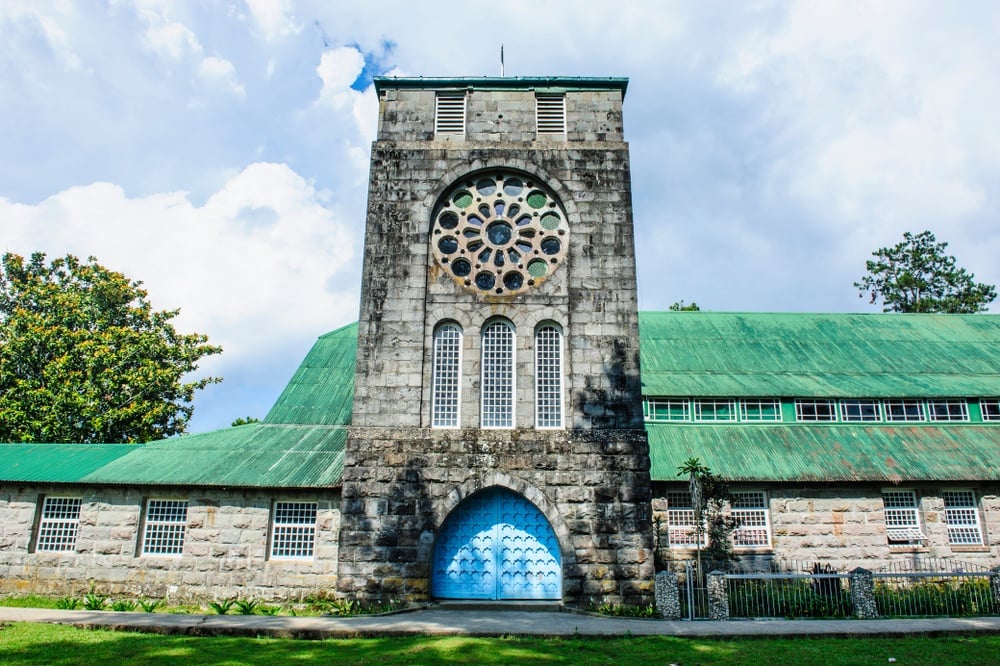
I know it can be hard, but do your best to use the least amount of plastic water bottles that you can. Refill the ones that you do buy! Use a Grayl Geopress. Refill at your hostel! There are plenty of ways to reduce plastic!!!
Show the world around you some gratitude and help to make a positive impact on it. Be a good traveller, smile, laugh, and show the world your best side. Most of all have the time of your life and spread the love!
I hope that this Sagada Travel Guide has been helpful to assist in planning where to stay, how to get to Sagada, what to eat and, the top things to add to your Sagada itinerary.
Don’t Forget Travel Insurance for Sagada
ALWAYS sort out your backpacker insurance before your trip. There’s plenty to choose from in that department, but a good place to start is Safety Wing.
They offer month-to-month payments, no lock-in contracts, and require absolutely no itineraries: that’s the exact kind of insurance long-term travellers and digital nomads need.
SafetyWing is cheap, easy, and admin-free: just sign up lickety-split so you can get back to it!
Click the button below to learn more about SafetyWing’s setup or read our insider review for the full tasty scoop.
FAQs About Travelling to Sagada
Here’s what people usually ask us about visiting Sagada, and what they wanted from my Sagada Travel Guide.
Final Thoughts
Sagada is a fantastic place to head to, especially if your Philippines trip has become too beachy. The rice paddies, mountain air and bizarre culture are all massive drivers of tourism in the region. However, that doesn’t mean that it has become overcrowded. Whilst you will undoubtedly meet other tourist groups, the Philippine travel authority keeps a sharp eye on tourism in the region. So don’t worry!
You’re going to need that adventurous spirit because Sagada is probably one of the strangest and most brilliant places you will ever go to. I hope you enjoyed my Sagada travel guide!
Abe out. 22/04/2023
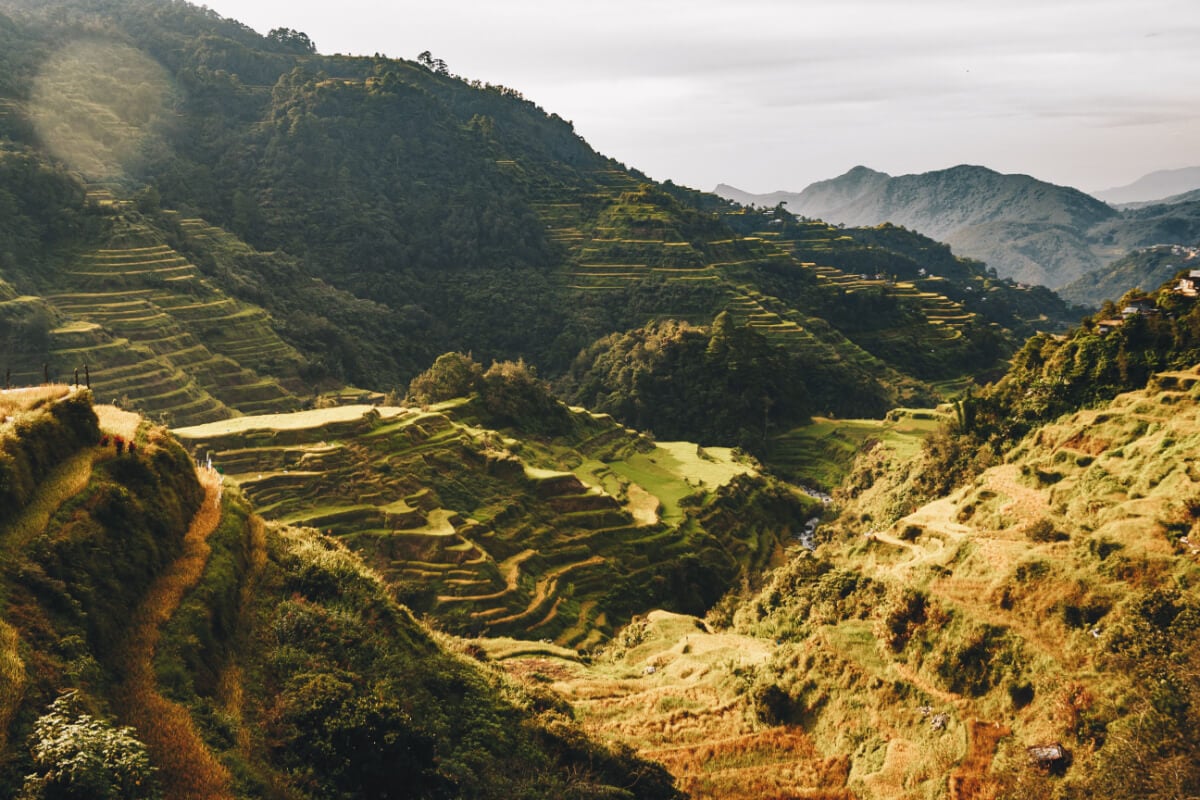
Buy Us a Coffee!
A couple of you lovely readers suggested we set up a tip jar for direct support as an alternative to booking through our links. So we created one!
You can now buy The Broke Backpacker a coffee. If you like and use our content to plan your trips, it’s a much appreciated way to show appreciation 🙂


